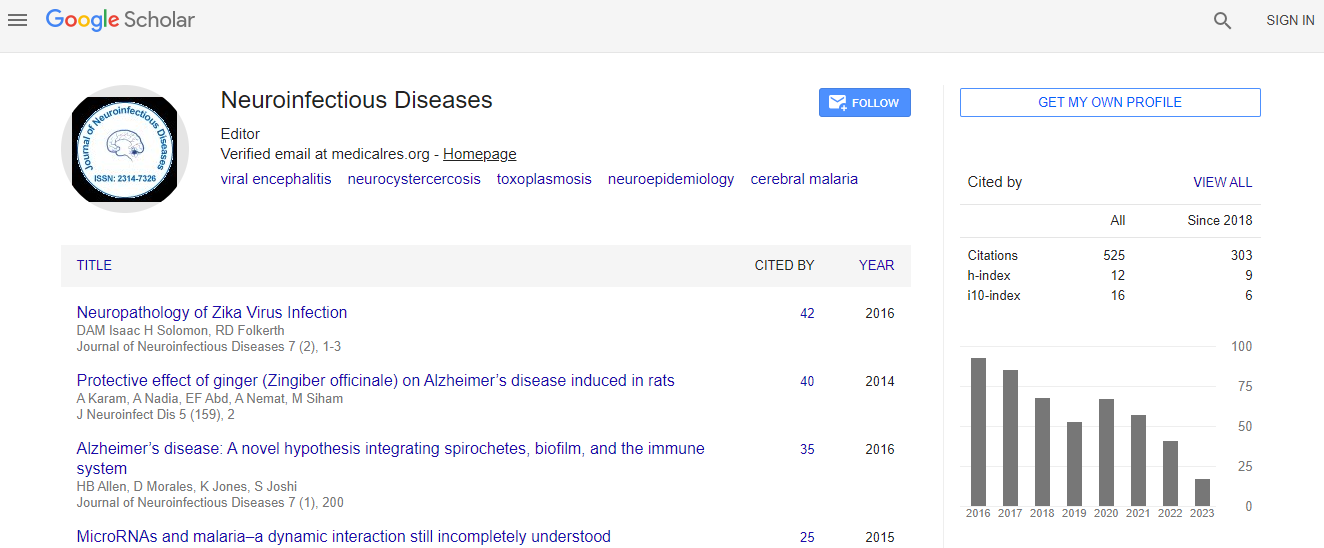Research Article
Exploring Serologic Indicators for Laboratory Diagnosis of Asymptomatic Neurosyphilis
Wei-Ming Gu1*, Yue Chen2, Lei Wu1 and Yang Yang1
1Shanghai Dermatology Hospital, Shanghai, China
2School of Epidemiology, Public Health and Preventive Medicine, University of Ottawa, Ottawa, Canada
- *Corresponding Author:
- Wei-Ming Gu
Shanghai Dermatology Hospital
196 Wu Yi Road, Shanghai 200050, China
Tel: +862161833177
Fax: +862161833177
E-mail: weiming_gu2003@aliyun.com
Received Date: October 20, 2016; Accepted Date: November 07, 2016; Published Date: November 09, 2016
Citation: Gu WM, Chen Y, Wu L, Yang Y (2016) Exploring Serologic Indicators for Laboratory Diagnosis of Asymptomatic Neurosyphilis. J Neuroinfect Dis 7:232. doi: 10.4172/2314-7326.1000232
Copyright: © 2016 Gu, et al. This is an open-access article distributed under the terms of the creative commons attribution license, which permits unrestricted use, distribution, and reproduction in any medium, provided the original author and source are credited.
Abstract
Background: Diagnosis of asymptomatic neurosyphilis (NS) has been challenging. The gold standard for NS diagnosis relies on venereal disease research laboratory (VDRL) test of cerebrospinal fluids (CSF). The aim of this study was to examine criteria for lumbar puncture and CSF examinations in asymptomatic NS patients.
Methods: One hundred and twenty-three syphilis inpatients were recruited, including 24 NS and 99 non-NS cases. NS diagnosis was based on hospital discharge. Clinical data were collected. Serological tests included Treponema pallidum particle agglutination assay (TPPA), the toluidine red unheated serum test (TRUST), and concentrations of serum IgG, IgA, IgM and albumin. Parameters of CSF examinations included reactivity of VDRL test and TPPA, white blood cell counts (WBC), levels of CSF IgA, IgG and IgM, levels of CSF albumin, total protein and glucose.
Results: Neurologic manifestations were significantly associated with NS. The titres and reactivity of serum TRUST and TPPA, and the concentrations of serum IgG, IgA, IgM and albumin were not significantly different between NS and non-NS patients. In CSF, 95.8% NS patients were VDRL reactive, and all non-NS patients were VDRL non-reactive. Levels of CSF WBC, IgG, IgA, IgM, albumin and total protein were significantly higher in NS than non-NS patients. Levels of CSF glucose and chloride were not different between NS and non-NS patients. The indexes of IgG and IgM and the quotient of albumin were significantly higher in NS than in non-NS patients. Multiple logistic regression analysis revealed that among the CSF and non-CSF indicators only neurologic manifestations were significantly associated with NS.
Conclusions: Neurologic manifestation was the only indicator significantly associated with NS. Serologic parameters seem not sensitive laboratory indicators for diagnosis of NS.

 Spanish
Spanish  Chinese
Chinese  Russian
Russian  German
German  French
French  Japanese
Japanese  Portuguese
Portuguese  Hindi
Hindi 
